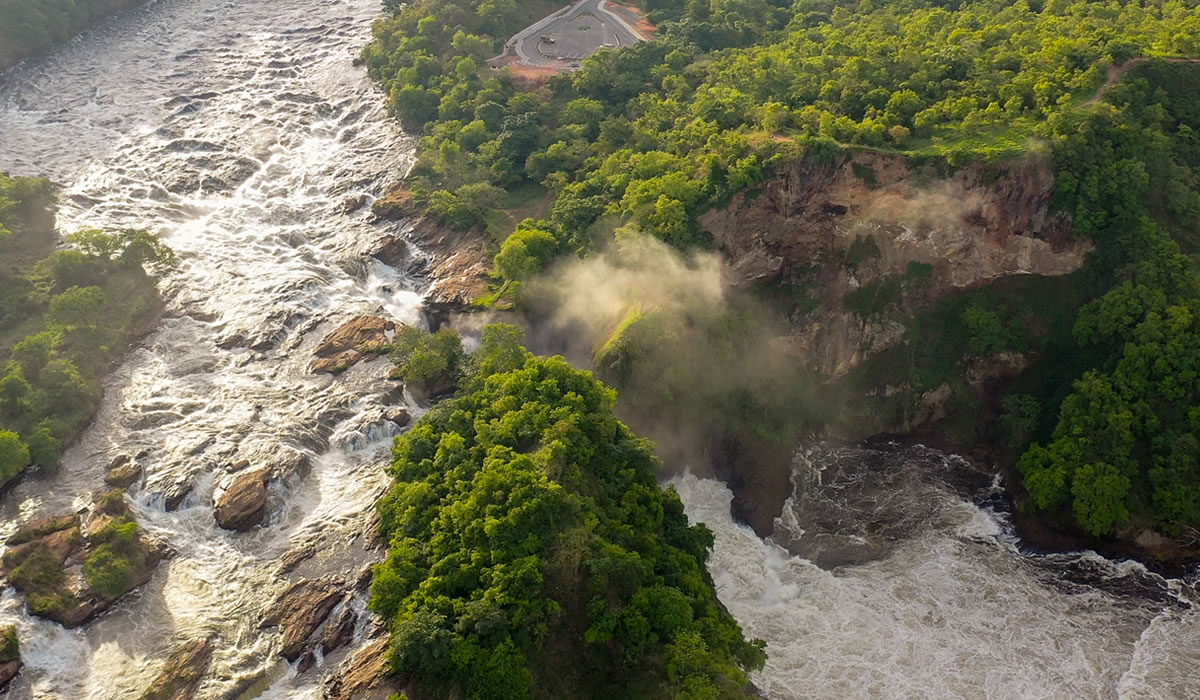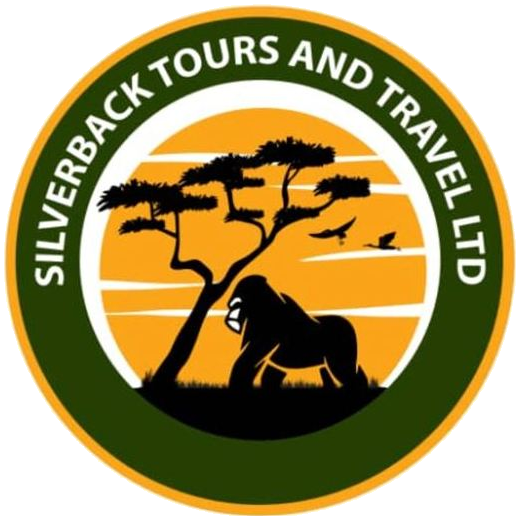Murchison Falls National Park, located in northwestern Uganda, is the country’s largest and oldest national park, covering approximately 3,893 square kilometers. Established in 1952, the park is named after the dramatic Murchison Falls where the Nile River explodes through a narrow gorge and plunges 43 meters before flowing westward into Lake Albert. This spectacle of nature is one of the most powerful waterfalls in the world and serves as the centerpiece of the park’s incredible diversity and scenic beauty. Murchison Falls National Park is part of the larger Murchison Falls Conservation Area, which includes Bugungu and Karuma Wildlife Reserves, forming one of the most important ecological zones in East Africa.

Wildlife and Biodiversity
Murchison Falls National Park is a haven for wildlife lovers, offering one of the best safari experiences in Uganda. It supports an impressive array of biodiversity, including over 76 mammal species and more than 450 bird species. The northern part of the park, which lies north of the Nile, is particularly rich in game and features sprawling savannah, riverine forest, and woodland habitats.
Visitors are likely to encounter large herds of elephants, Rothschild’s giraffes, buffaloes, and Ugandan kobs. Lions and leopards are also present, with lions frequently spotted in the open grasslands. Hippos and crocodiles thrive in the Nile, while other common sightings include warthogs, hartebeests, and waterbucks. The park is also one of the few places in Uganda where the rare shoebill stork can be found, making it a prime location for birdwatchers.
The Nile itself is a lifeline that supports the park’s abundant life, and its delta into Lake Albert is a hotspot for aquatic birds and animals. The variety of landscapes, from river to savannah to forest, makes the park uniquely diverse in terms of both flora and fauna.
Activities in Murchison Falls National Park
1. Game Drives
Game drives are among the most popular activities in Murchison Falls National Park. Conducted in the early morning and late afternoon, these drives primarily take place on the northern side of the Nile, where the density of wildlife is highest. The Buligi Peninsula is particularly productive, offering panoramic views and rich wildlife sightings. Accompanied by experienced guides, visitors may see lions stalking prey, elephants marching across the plains, or giraffes gracefully browsing on acacia trees.
2. Boat Safaris on the Nile
A boat safari along the Nile is arguably the highlight of a visit to Murchison Falls. The standard boat trip travels upstream from Paraa to the base of Murchison Falls, offering spectacular views of the powerful waterfall as well as excellent wildlife viewing along the riverbanks. Hippos, Nile crocodiles, and elephants are commonly seen along the shore, while numerous bird species flit through the air or fish in the water. For a longer and quieter experience, a boat cruise to the Nile delta provides a chance to explore a less-visited part of the river with excellent birdwatching opportunities.
3. Hike to the Top of the Falls
To fully appreciate the power and beauty of Murchison Falls, visitors can hike to the top of the falls. This exhilarating walk follows a steep trail that begins at the boat landing at the base and climbs alongside the roaring cascade to the summit. At the top, you’ll witness the Nile thundering through a narrow 7-meter-wide cleft in the rock, a sight that is both mesmerizing and deafening. The views from the top are exceptional and offer fantastic photo opportunities.
4. Bird Watching
Murchison Falls is a birdwatcher’s paradise. With over 450 species recorded, birders can expect to encounter a range of water birds, savannah species, and rare finds. Key species include the shoebill stork, Goliath heron, African jacana, Secretary bird, and Grey crowned crane, Uganda’s national bird. Birding can be done during game drives, boat cruises, or on nature walks, particularly in forested areas like Rabongo and Kaniyo Pabidi.
5. Chimpanzee Tracking in Budongo Forest
Part of the greater conservation area, Budongo Forest Reserve is a tropical rainforest on the southern edge of the park and is famous for chimpanzee tracking. Visitors can trek through the dense forest in search of habituated chimpanzee families while also enjoying sightings of other primates like black-and-white colobus monkeys and red-tailed monkeys. The forest is also rich in birdlife, with special species like the puvel’s illadopsis.
6. Hot Air Balloon Safari
For a unique and unforgettable experience, visitors can take a hot air balloon safari over the northern savannah plains. These early morning excursions offer a bird’s-eye view of the park and its wildlife, often ending with a bush breakfast in the wild. Though more expensive, this activity provides a serene and scenic way to experience Murchison’s vastness and beauty.
Best Time to Visit
Murchison Falls National Park can be visited throughout the year, but the best time to go largely depends on personal preferences regarding weather and wildlife viewing.
Dry Season (December to February and June to September)
These months are ideal for game viewing, as animals tend to congregate around water sources, making sightings more frequent and predictable. The dry season also means the roads and trails are easier to navigate, and the skies are clearer for photography. This period is particularly good for boat cruises and hikes to the top of the falls.
Wet Season (March to May and October to November)
Though the park receives fewer visitors during the rainy seasons, the landscape becomes lush and green, making it exceptionally beautiful. Birdwatchers often prefer these months due to the presence of migratory birds and increased bird activity. However, some roads may become muddy, and certain activities can be more challenging due to rainfall.
Where to Stay
Accommodation options in and around Murchison Falls National Park range from luxury lodges to budget campsites. Most lodges are located either near Paraa, on the southern side of the Nile, or in the Pakuba and Chobe areas to the north.
Luxury Lodges
- Chobe Safari Lodge: Situated on the banks of the Nile, this elegant lodge offers upscale amenities, including a spa, swimming pool, and riverside dining.
- Baker’s Lodge: Intimate and eco-friendly, located near Paraa and offering luxurious riverside cottages.
- Paraa Safari Lodge: One of the most established lodges in the park, with sweeping views of the Nile and a convenient location for activities.
Mid-Range Options
- Pakuba Safari Lodge: Located on the northern side of the park, it offers good access to game drive areas and comfortable accommodation.
- Murchison River Lodge: A charming mid-range lodge on the southern bank with tents, cottages, and great food.
Budget Accommodation
- Red Chilli Rest Camp: Ideal for backpackers and budget travelers, offering basic but clean bandas and camping options.
- Shoebill Campsite: Located near the Nile and managed by the Uganda Wildlife Authority, this is a good option for adventurous travelers looking to camp in the wild.
How to Get There
Murchison Falls National Park is about 305 kilometers from Kampala, Uganda’s capital city, and can be accessed by both road and air.
By Road
The most common route is by road, with the journey taking about 5 to 6 hours. The Kampala-Gulu highway leads to several park entry points, including Kichumbanyobo Gate (southern entrance via Masindi) and Tangi Gate (northern entrance near Pakwach). The road to Paraa includes a ferry crossing if approaching from the south. Many tour operators offer guided trips from Kampala or Entebbe, which can include stops at Ziwa Rhino Sanctuary en route.
By Air
Scheduled and chartered flights are available from Entebbe International Airport to airstrips inside or near the park, such as Pakuba, Bugungu, and Chobe. Flights take about one hour and are operated by local airlines such as Aerolink and Bar Aviation. From the airstrips, road transfers can be arranged to the various lodges.
Conservation and Responsible Tourism
Murchison Falls National Park plays a critical role in Uganda’s conservation efforts. Revenue from park entrance fees and activities like game drives and boat cruises helps fund anti-poaching initiatives, habitat restoration, and community development. Tourists are encouraged to travel responsibly by minimizing waste, respecting park rules, and supporting eco-friendly accommodations.
Community tourism initiatives around the park also give travelers the chance to engage with local culture and contribute to sustainable livelihoods. These include visits to cultural centers, craft markets, and guided nature walks with local guides who share their knowledge of the land and its traditions.
Final Thoughts
Murchison Falls National Park is a showcase of Uganda’s natural splendor, home to mighty rivers, thunderous waterfalls, vast savannahs, and a dazzling array of wildlife. Whether you’re drawn by the power of the falls, the majesty of the animals, or the tranquility of the Nile, the park offers a rewarding and diverse safari experience. With a variety of activities and accommodations to suit all types of travelers, Murchison is both accessible and awe-inspiring, a place where adventure and serenity go hand in hand, and every moment in nature becomes a memory of a lifetime.

